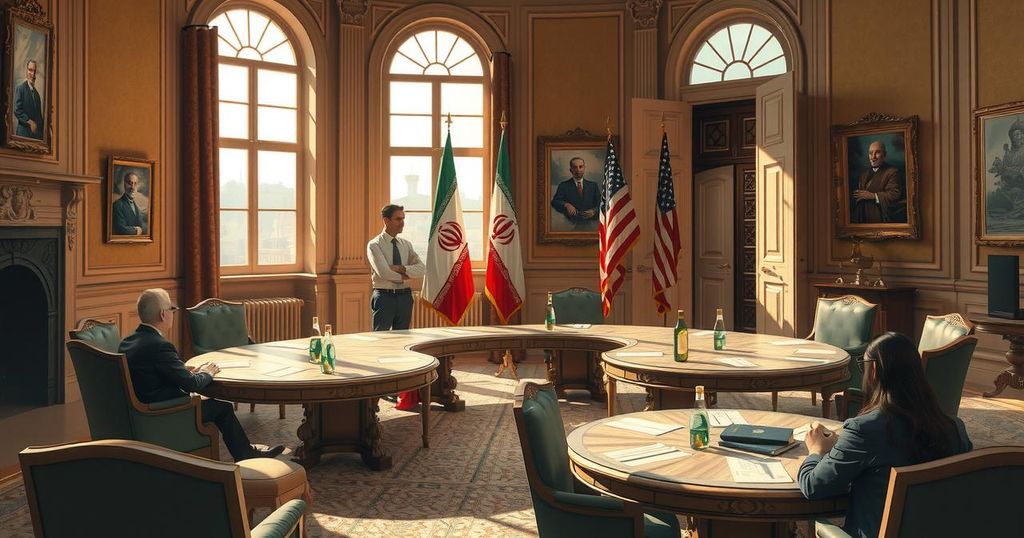U.S.-Iran Nuclear Negotiations Continue with Subsequent Talks Scheduled for Oman
The United States and Iran have concluded a second round of nuclear negotiations in Rome, with future technical talks set for Oman. Iranian officials emphasize a commitment to constructive dialogue amid rising regional tensions and economic challenges. Both parties hope for a favorable outcome, with discussions reflecting the complexities of historical animosity and current geopolitical dynamics.
Negotiations regarding Iran’s nuclear program between the United States and Iran have advanced with the announcement of a second round of talks. Iranian Foreign Minister Abbas Araghchi revealed that the next discussions will take place in Oman on April 26, with preliminary meetings involving technical experts scheduled beforehand. He emphasized the constructive nature of the talks conducted in Rome, expressing hope for a favorable outcome following these technical discussions.
The recent talks, held at the Omani Embassy in Rome, lasted several hours and concluded without an immediate statement from U.S. officials. Iranian Foreign Ministry spokesman Esmail Baghaei indicated that Iran is committed to pursuing negotiations seriously, aiming to alleviate the severe economic sanctions currently imposed on the country. American officials also confirmed the conclusion of the discussions.
The indirect nature of the talks, similar to previous discussions in Muscat, Oman, marks a significant moment in U.S.-Iran relations, which have been fraught with tension since the 1979 Islamic Revolution. Former President Donald Trump’s withdrawal from the nuclear deal in 2018 has further complicated diplomacy surrounding Iran’s nuclear ambitions.
As fresh tensions rise across the Middle East, the risks of military action against Iran, or Iran potentially pursuing nuclear weapons, loom large. Amidst these concerns, Araghchi met with Italian Foreign Minister Antonio Tajani prior to his discussions with U.S. envoy Steve Witkoff, who had been engaged in other diplomatic matters in Europe before the negotiations.
Insights from Rafael Mariano Grossi, head of the International Atomic Energy Agency (IAEA), emphasized the IAEA’s role in monitoring any prospective agreements. Tajani reaffirmed Italy’s willingness to facilitate ongoing discussions at both political and technical levels. Iran’s insistence on maintaining a balanced approach during the talks suggests a demand for substantive agreements instead of unilateral concessions.
Domestically, Iran faces challenges such as internal political unrest related to social issues, including protests tied to the mandatory hijab law. The Iranian economy remains under significant strain, with fluctuations in the rial currency reflecting broader economic instability. Nonetheless, recent developments have led to a slight strengthening of the currency amid ongoing negotiations for potential international agreements.
In a related note, Iran Air received two Airbus A330-200 aircraft, which were previously owned by Hainan Airlines, highlighting the potential for economic renewal despite sanctions. The aircraft’s acquisition involves complex negotiations due to the components of American origin included in their engines, suggesting ongoing challenges within the economic framework dictated by international sanctions.
The latest round of U.S.-Iran negotiations represents a potential turning point in diplomatic relations concerning Iran’s nuclear program. Despite the ongoing political and economic challenges faced by Iran, including internal dissent and strict sanctions, the commitment to dialogue signifies a cautious optimism for future agreements and regional stability. Observers note that success in these negotiations could significantly impact both nations’ strategies moving forward.
Original Source: www.wdrb.com




Post Comment